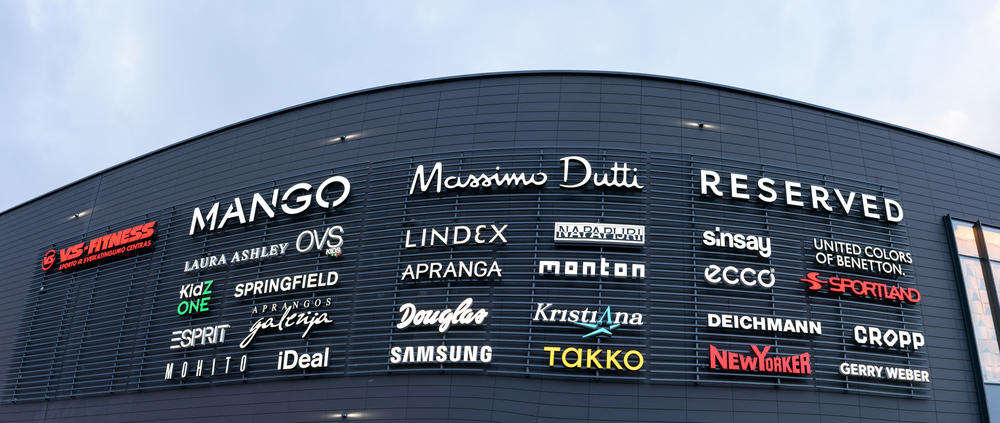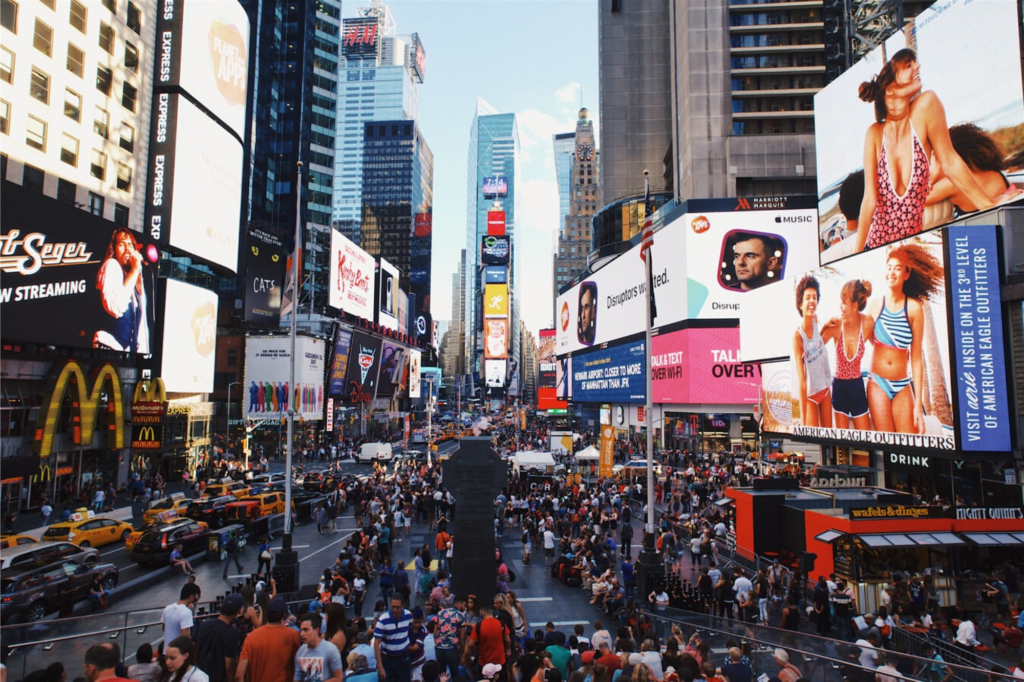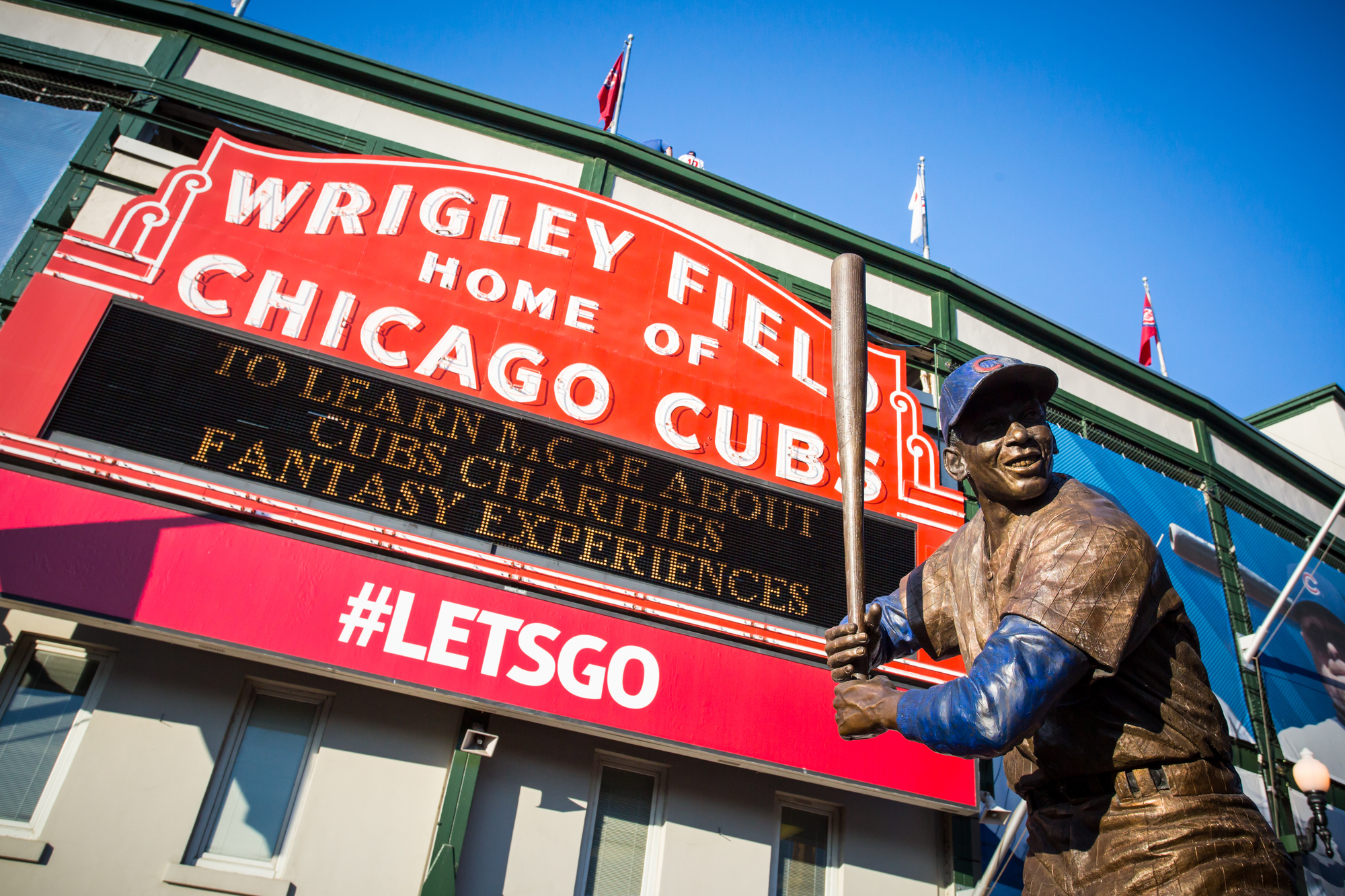Introduction
Choosing the right mounting method for your channel letter signs is crucial, impacting both their visual appeal and functionality. While flush mounting offers a clean look, raceway and wireway mounting methods provide enclosures for the electrical components that power your signs. Understanding the key differences between raceways and wireways will equip you to make an informed decision for your specific needs.

Understanding Channel Letter Mounting Method
1. Flush Mount (Remote Mount):
This method involves directly attaching each channel letter to the building surface. The electrical components, such as transformers and wiring, are typically housed remotely within the building itself.
- Advantages:
- Offers a clean, streamlined appearance as the electrical components are hidden from view.
- Can be a cost-effective option, especially for smaller signs.
- Disadvantages:
- Requires the most drilling into the building facade, potentially causing more damage.
- Maintenance can be challenging as accessing electrical components necessitates removing the entire sign.
- Flush mounting might not be suitable for all building materials or in situations where local regulations limit the number of allowable protrusions.
Raceway Mount:
Raceways are long, rectangular metal boxes typically made from sheet metal. They are attached to the building surface and house all the electrical components for your channel letter signs.
- Advantages:
- Provides a good balance between aesthetics and functionality. The raceway enclosure protects the electrical components from the elements and allows for easier access compared to flush mounting.
- Requires fewer drilled holes than flush mounting.
- Raceways can be painted to match your building facade or signage for a cohesive look.
- Disadvantages:
- More visible than flush mounting due to the presence of the raceway itself.
- May not be the most economical option for larger or more complex signs, as the raceway size needs to accommodate all the electrical components.
Wireway Mount:
Wireways offer a slimmer alternative to raceways. These closed passages, typically constructed from aluminum, primarily house the electrical wires for your sign’s LED illumination. Unlike raceways, wireways don’t include space for transformers or power supplies.
- Advantages:
- The most visually unobtrusive mounting method due to their smaller size and streamlined design. This can be a deciding factor for businesses that value a clean, modern aesthetic.
- Wireways can help ensure your sign adheres to local regulations that limit how far signage can protrude from a building.
- Disadvantages:
- Wireways require more mounting holes than raceways.
- Since they don’t house power supplies, replacing electrical components becomes more complex and often necessitates removing the entire sign structure from the wall for servicing or repairs, leading to higher costs and downtime.

Deep Dive: Raceways vs. Wireways
Understanding the contrasting features of raceways and wireways is crucial for making an informed decision about your channel letter sign mounting method. Here’s a breakdown of the key differences:
Electrical Component Replacement
Raceway
- Simpler and Less Disruptive: Raceways provide a significant advantage when it comes to maintenance. Since all the electrical components (transformers, wiring) are housed within the raceway itself, accessing and servicing them is a much easier process. Technicians only need to remove the raceway top to perform replacements or repairs, minimizing downtime and labor costs.
Wireway
- More Complex and Costly: Wireways present a greater challenge for maintenance due to the absence of internal power supplies. Replacing electrical components often necessitates removing the entire sign structure from the wall to access the components located behind the wall. This process can be time-consuming, require additional labor, and potentially damage the sign or building facade.
Building Owner Preferences
- Aesthetics and Compliance:
Landlords frequently favor wireways for their slim design, creating a less obtrusive look compared to raceways. This can be especially important for maintaining a clean aesthetic on building facades. Additionally, wireways often comply better with local regulations that set limits on how far signs can protrude from a building. Their smaller profile helps ensure your channel letter sign stays within compliance.
Key Specifications and Considerations: A Comparison Table
| Feature | Raceway | Wireway |
Material | Typically Sheet Metal | Typically Aluminum |
Dimensions | Varies depending on sign size (generally thicker than wireways) | Typically slimmer and shallower (around 2 inches deep) |
Electrical Components Housed | Transformers, Wiring, Power Supplies | Primarily Electrical Wires (no power supplies) |
Maintenance | Easier access for servicing components | Requires potentially removing entire sign structure |
Appearance | More visible due to larger size | Sleeker, less obtrusive design |
Building Owner Preference | Less preferred due to larger size | Often preferred for aesthetics and compliance |
Cost | Potentially more expensive for larger signs | Generally less expensive |

Choosing the Right Mounting Method: A Decision Guide
Selecting the ideal mounting method for your channel letter signs requires careful consideration of several factors. Here’s a framework to guide you through the decision-making process:
Local Regulations:
Start by researching your local zoning and sign ordinances. These regulations might set limitations on the allowed protrusion distance of signs from the building facade.
- Wireways are generally the preferred option if your desired sign design pushes the boundaries set by local regulations. Their slim profile helps ensure compliance.
Aesthetic Preferences:
- Consider the overall visual impact you want to achieve.
- Do you prioritize a clean, streamlined look? If so, flush mounting or wireways might be suitable options.
- Do you prefer a more modern aesthetic with minimal visual clutter? Wireways are the clear winner here due to their sleek design.
- Raceways offer a middle ground, providing a more prominent presence compared to flush mounting or wireways, but with a less modern look.
Maintenance Needs and Budget:
- Evaluate your budget and tolerance for potential downtime associated with maintenance.
- Raceways offer easier access to electrical components for repairs and replacements, minimizing downtime and labor costs.
- Wireways, while aesthetically pleasing, can be more complex and expensive to maintain due to the need for potentially removing the entire sign structure.
Conclusion
Choosing the right mounting method for your channel letter signs is an important decision that impacts both aesthetics and functionality. By understanding the advantages and disadvantages of flush mounting, raceways, and wireways, you can select the option that best suits your needs. Raceways offer a good balance of aesthetics and ease of maintenance, while wireways provide a sleek, modern look and often comply better with local regulations. Ultimately, the ideal choice depends on your specific priorities, such as budget, desired look, and maintenance requirements.
Partner with Tupp Signs for Expert Guidance
Don’t navigate the world of channel letter mounting alone! Tupp Signs offers a wealth of experience in designing, fabricating, and installing channel letters using all mounting methods. Our skilled professionals can help you assess your unique requirements and recommend the most suitable solution for your signage project.
Contact Tupp Signs today for a free consultation! We’re here to answer your questions and guide you towards creating a stunning and functional channel letter sign that meets your vision and budget. Call us at 866-324-7446 to schedule a consultation.


